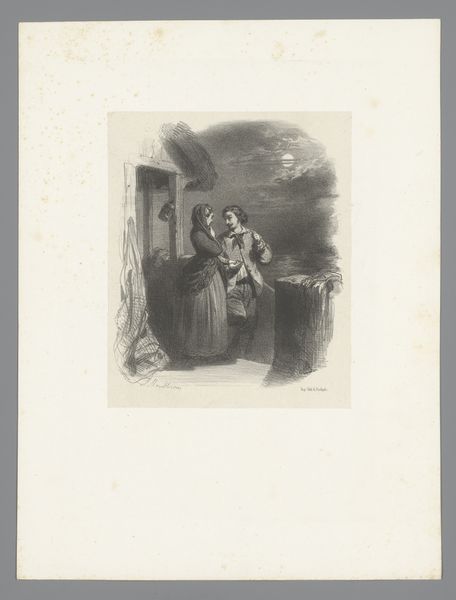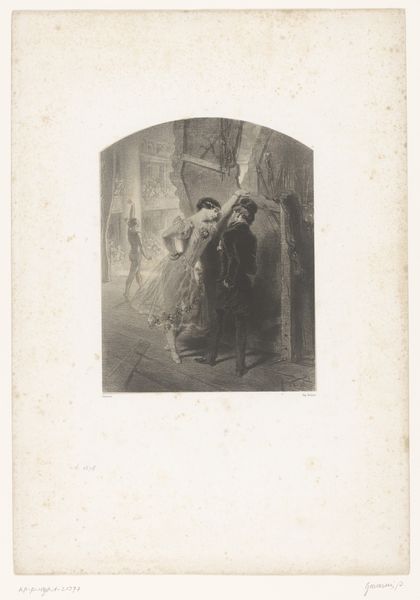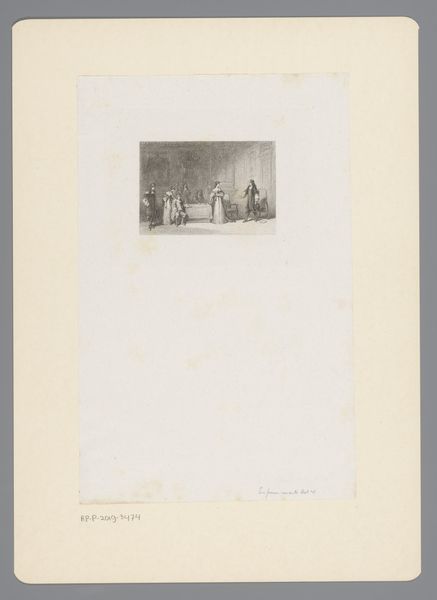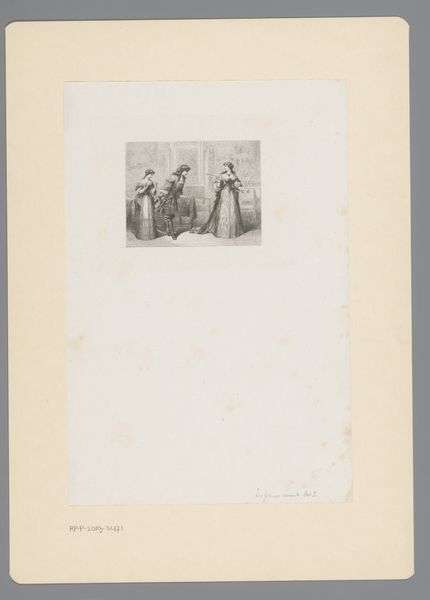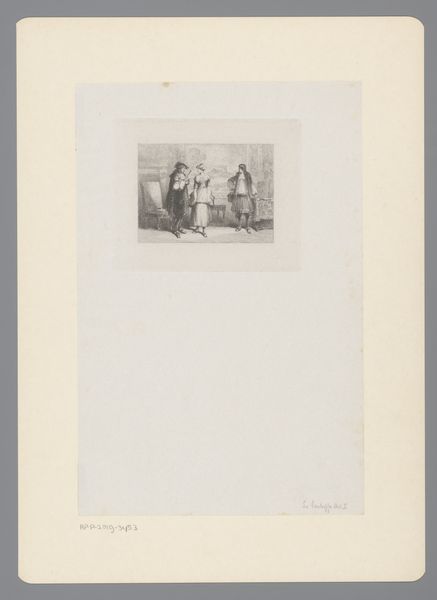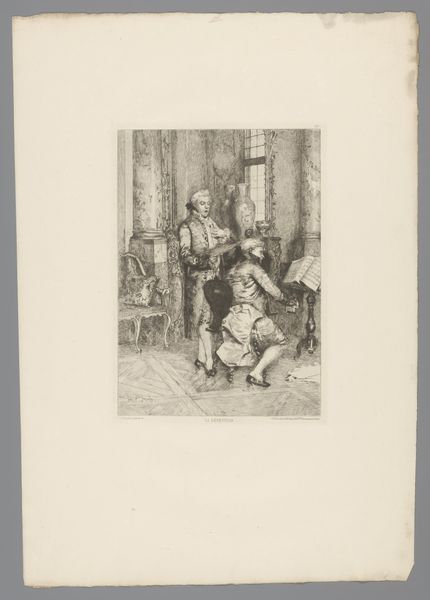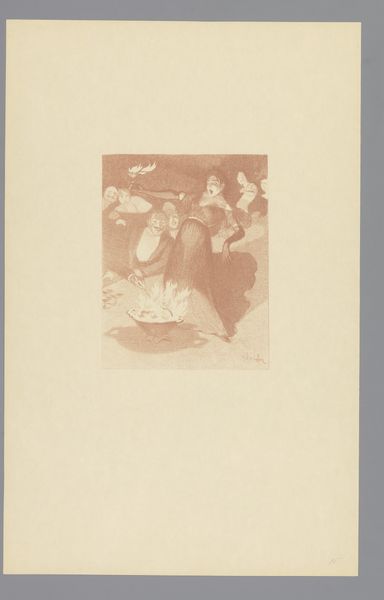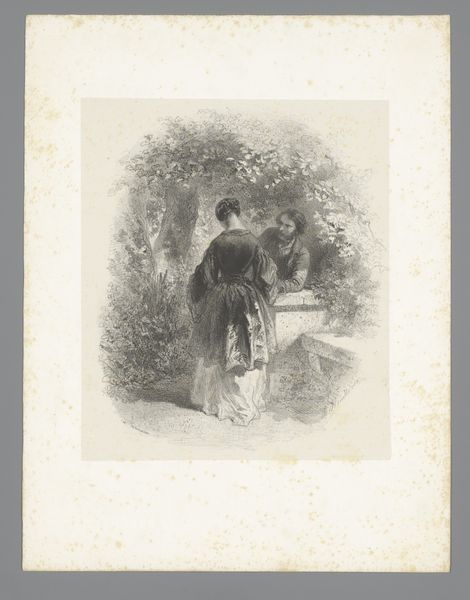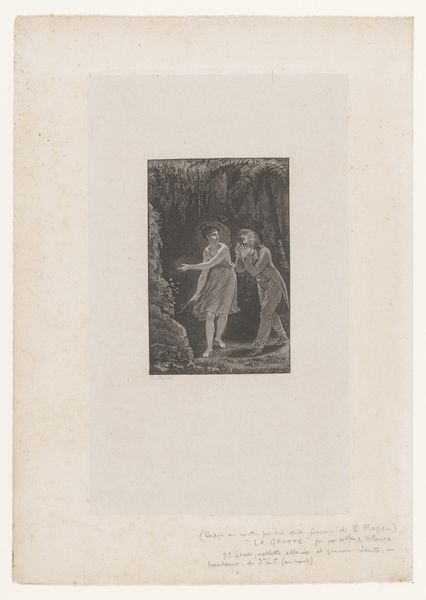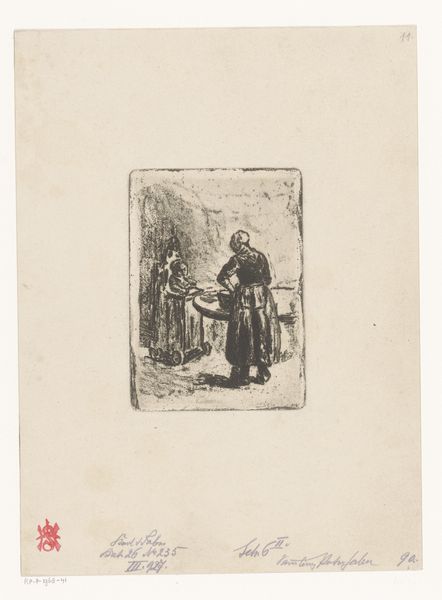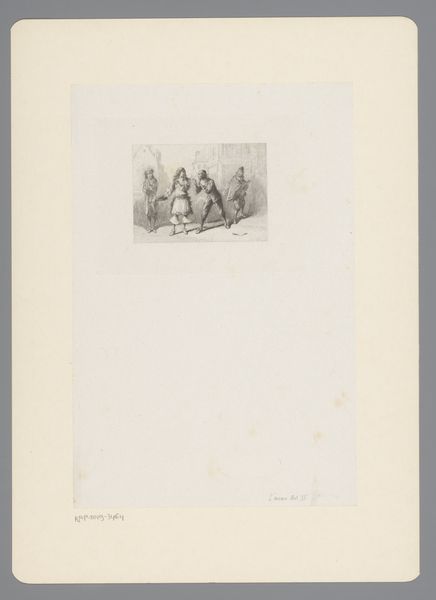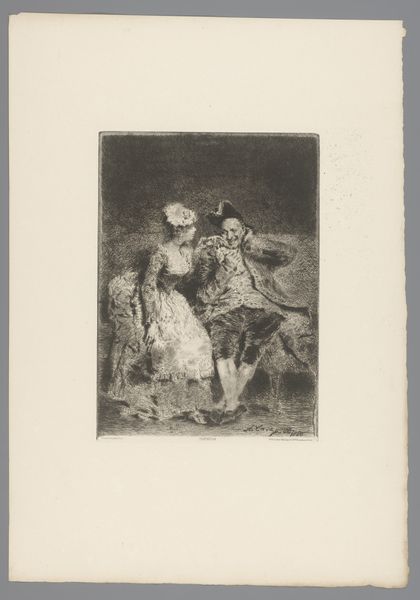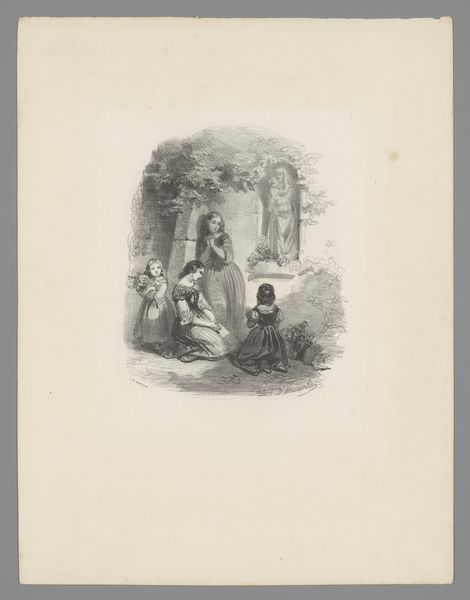
Dimensions: height 238 mm, width 157 mm
Copyright: Rijks Museum: Open Domain
Editor: Here we have Adolphe Lalauze's etching from 1875, "Tartuffe overhandigt een zakdoek aan Toinette," rendered on paper. The interaction between the figures, the line work and rendering… It creates a farcical tone, almost like a stage play frozen in time. What do you see in this piece, especially concerning its structure and composition? Curator: Precisely. Note the stark contrast created through Lalauze’s strategic deployment of line and shadow. Observe how this contrast manipulates our perception of depth. It also throws into sharp relief the thematic tension inherent to Molière's play through purely formal means. The foreground dominates, while the background with figures almost blurs. Is it clear what significance is attributed to this formal division? Editor: I think it directs attention to the characters and the moment of the handkerchief. The contrast highlights them against their more vaguely rendered, almost dream-like setting. What are your thoughts on the subjects' dynamic poses and relation to one another? Curator: Consider how the body language communicates intent and deception through posture and gesture alone. Toinette stands rigidly open, whereas Tartuffe angles, bending, his figure is a flurry of lines. One can sense Tartuffe's duplicity and Toinette’s guardedness before understanding any literary meaning. Without this technical achievement the image wouldn’t successfully communicate. Editor: That's a great observation about their body language contributing to the story, just through visual means. I am beginning to see Lalauze was using form and composition to convey character. Curator: Exactly. And isn't it fascinating how such an "old-fashioned" print can feel so immediate, just by its control of line? Editor: It really is! I appreciate learning how the technique amplifies narrative meaning, and how line becomes an orator!
Comments
No comments
Be the first to comment and join the conversation on the ultimate creative platform.
